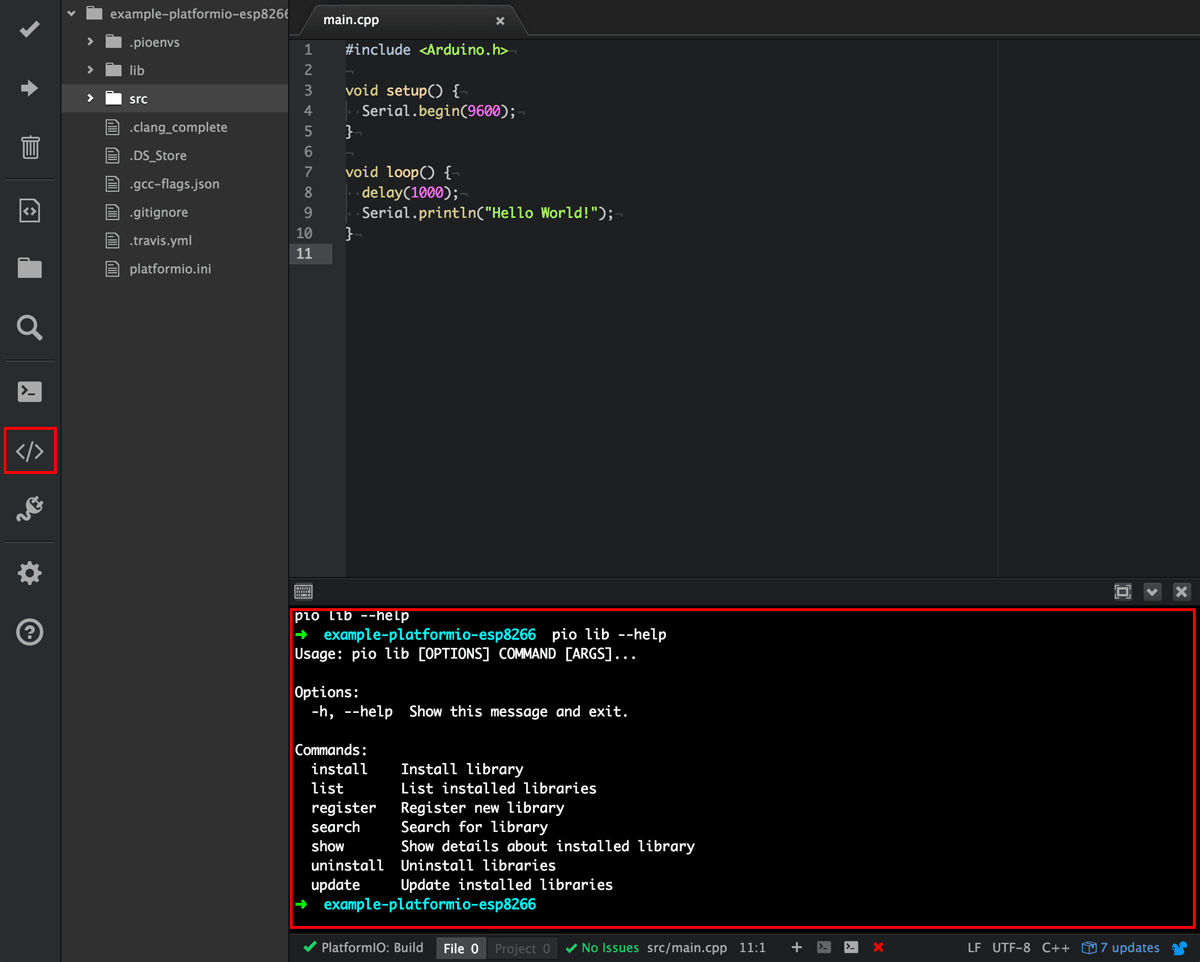
- #Software serial esp8266 programming how to
- #Software serial esp8266 programming serial
- #Software serial esp8266 programming code
#Software serial esp8266 programming serial
#Software serial esp8266 programming code
The ATmega168 or ATmega328 on the Arduino Nano comes with a bootloader that allows you to upload new code to it without the use of an external hardware programmer. This port sends the data to a second remote Arduino over RS485. Enables the selected software serial port to listen. 11 Extract the downloaded folder, downloaded in step 3. Only one software serial port can listen at a time data that arrives for other ports will be discarded. read() Then mySecondCharacter would be holding the value “u”, and “b Sandwich” would be left in the serial receive buffer. The Arduino Mega has four hardware serial ports that can communicate with up to four different serial devices. You should get an output similar to figure 1, which shows the counter decrementing and the ESP8266 restarting when it reaches zero.įigure 1 – Output of the program for restarting the ESP8266. Remember that we need to use the same baud reate we have passed as input to the begin method of the Serial object. To test the code, we just need to upload the previous Arduino sketch to the ESP8266 and open the Arduino IDE serial monitor. The final complete source code can be seen below. Moving on to the remaining code, after the previous conditional block, we will decrement the global counter and perform a one second delay. Under the hood, these two functions call two different low level functions, as can be seen by the implementation of the EspClass. On the other hand, the restart method we have used indicates to the ESP8266 SDK to reboot, which is cleaner and is the recommended method. However, this method call is a hard reset that can leave some ESP8266 registers in their old state, which may lead to problems. Note that there’s actually a reset method also available on the ESP object. This ESP object can be accessed in our code without the need for any. To restart the ESP8266, we need to call the restart method on the ESP extern variable, which is an object of class EspClass (header file available here). If it does, we will print a simple informative message and restart the device.

Next we will check if the counter has already reached the value zero. On the Arduino main loop, we will start by printing the current counter value.

We will only do this method call on the whole setup function, which can be seen below.

Note that this method receives as input the baud rate for the connection, which we will later need to use on the Arduino IDE serial monitor, to get the output of the program. Moving on to the Arduino setup function, we will open a serial connection by calling the begin method on the Serial object. We will later access this variable on the Arduino main loop and decrement it at each iteration I will initialize it with the value 10, but you may use other value. We will start our code by declaring a global variable which will be our counter.

This tutorial was tested on a DFRobot’s ESP8266 FireBeetle board. If you are looking for a simular tutorial for the Arduino core running on the ESP32, please consult this post. To illustrate the functionality, we will create a simple program that decrements a counter each second and restarts the ESP8266 when it reaches zero.
#Software serial esp8266 programming how to
In this tutorial we will check how to perform a software restart on the ESP8266 using the Arduino core. In this tutorial we will check how to perform a software restart on the ESP8266 using the Arduino core. This tutorial was tested on a DFRobot’s ESP8266 FireBeetle board.


 0 kommentar(er)
0 kommentar(er)
